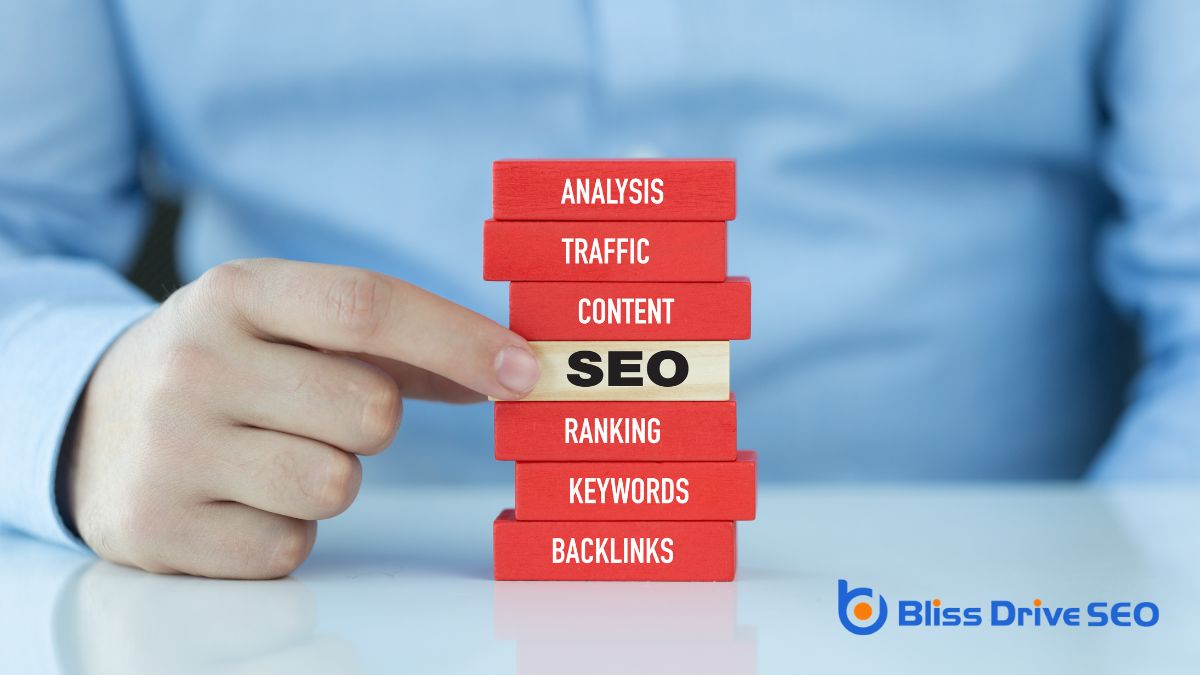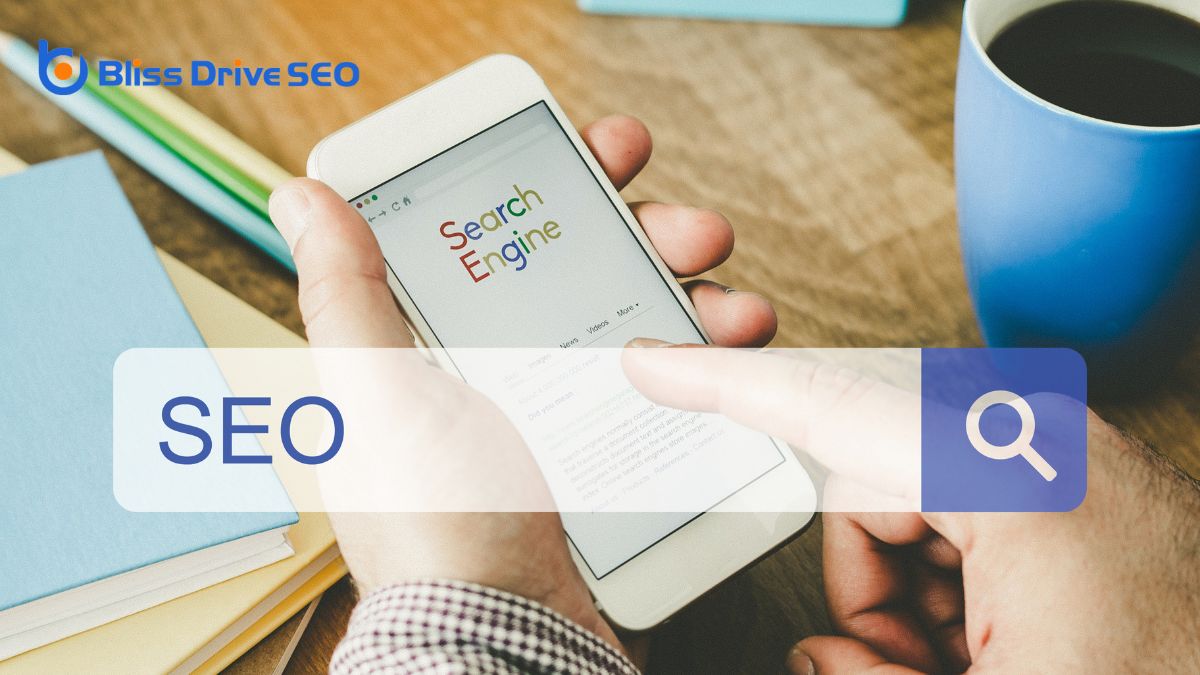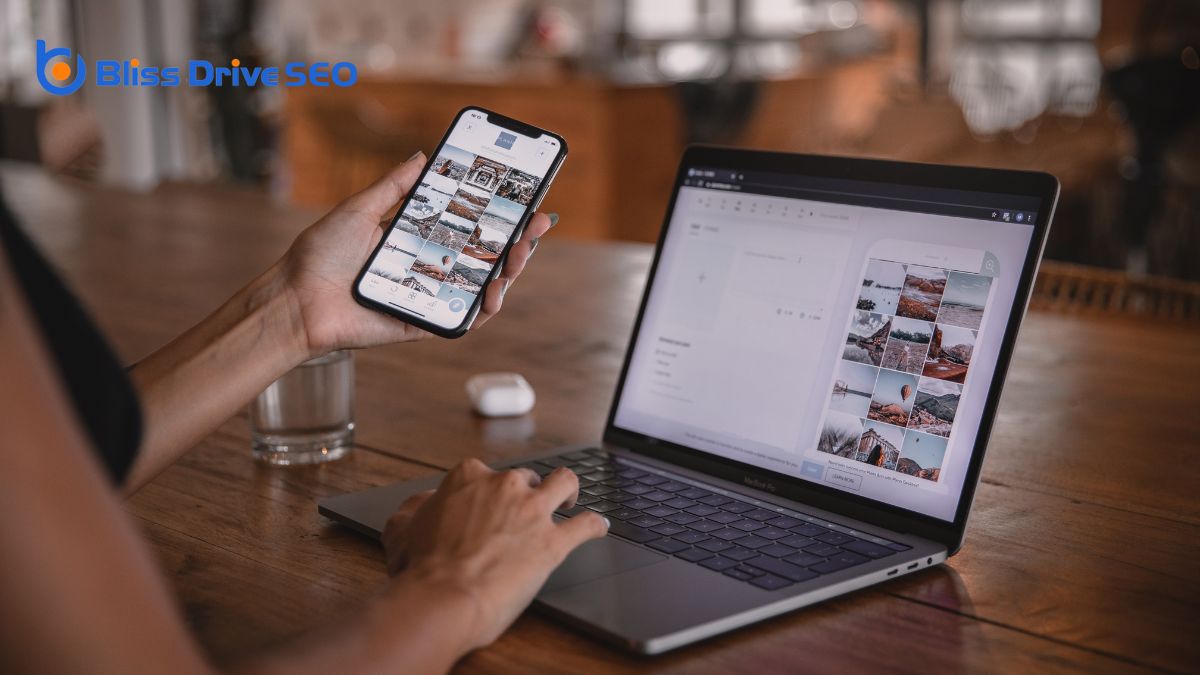Digital Marketing Services
Learn More About Us

Start with thorough keyword researchThe process of finding and analyzing search terms that people enter into search engines. using tools like Google Keyword Planner or Ahrefs. Optimize your title tags by making them unique and keyword-rich. Write compelling meta descriptions that include your target keywordsWords or phrases that users type into search engines to find information.. Structure your content with H1, H2, and H3 tags, and incorporate relevant keywords in these headers. Use internal linkingLinks that connect different pages on the same website. to guide users through your site and improve SEO. Make sure images are optimized with descriptive alt textDescriptions added to images to help search engines understand the content of images.. Finally, prioritize mobile-friendliness to boost your search rankingsThe position at which a website appears in the SERP.. There's much more to enhance, and you're just scratching the surface!

When delving into on-page SEOOptimization techniques performed directly on the website, including content and HTML source code., keyword research is your starting point. It's all about discovering relevant search terms and phrases that users are likely to enter into search engines. This fundamental step helps you understand user intent, enabling you to create content that aligns with what users are searching for.
To start, you can utilize tools like Google Keyword Planner, SEMrush, and Ahrefs. These tools will assist you in identifying high-volume keywords that attract a lot of searches, as well as low-competition keywords that give you a better chance to rank. It's crucial to strike a balance between these two types of keywords to maximize your reach.
Don't underestimate long-tail keywordsLonger, more specific keyword phrases that are less competitive and often more targeted., which are specific phrases that target a nicheA specific segment of the market targeted by affiliates to promote products or services. audience. These often have less competition and can be highly effective in driving targeted traffic. Integrating these into your content optimizationImproving content to enhance its performance and effectiveness. strategy can markedly enhance your search results.
After identifying the appropriate keywords, the next step is to optimize your title tags. Title tags are important HTML elements that display the title of a web page in search engine results. They play a significant role in on-page SEO because they directly impact your search engine visibility and click-through rates.
To enhance your title tags effectively, ensure they're unique and descriptive. Incorporate relevant keywords naturally within your title tags to help Google and other search engines comprehend the content of your web page. Remember, Google typically displays the first 50-60 characters of a title tagAn HTML element that specifies the title of a web page, displayed on the SERP and browser tab., so it's crucial to keep them concise and compelling.
A well-crafted title tag not only boosts your organic search performance but also captures the attention of potential visitors, encouraging them to click through to your site.
To create engaging title tags, consider what sets your page apart and valuable. Use language that connects with your audience and clearly communicates the page's content. By concentrating on these strategies, you'll enhance your on-page SEO and enhance your site's search engine visibility, ultimately driving more traffic and engagementThe interactions that users have with a brand’s content on social media. to your web pages.
Meta descriptions are vital HTML attributes that provide brief summaries of your web page content. They appear just below the page title on search engine results pages and can significantly impact your click-through rates. To make the most out of your meta descriptions, aim to be compelling and relevant, while also incorporating your target keywords. This is an essential on-page SEO tip that can't be overlooked.
Keeping your meta descriptions concise—ideally under 155-160 characters—ensures they're fully visible in search results. When users see a clear and engaging summary, it aligns with their search intentThe purpose behind a user’s search query. and encourages them to click on your link. This not only boosts your click-through rates but also improves user engagementThe level of interaction and involvement users have with social media content..
Crafting unique and engaging meta descriptions for each page can enhance your search engine visibility. These concise summaries serve as a pitch to potential visitors, convincing them that your page is worth their time.

Let's talk about header tags and why they're essential for your on-page SEO.
By properly structuring your content with H1, H2, and H3 tags, you can improve readability and signal the significance of your topics to search engines.
Remember to include your main keyword in the H1 tagThe main heading tag in HTML, important for SEO and indicating the primary topic of a page. and use H2 and H3 tags to break down your content for better navigation.
Header tags play an essential role in the architecture of your webpage, providing both structure and clarity to your content. When you use header tags like H1, H2, and H3, you're not just structuring content for visual appeal; you're signaling the significance of various sections to search engines. This is important because search engines rely on these signals to understand your content better and rank it accordingly.
Using header tags correctly improves readability and user experience. Think of the H1 tag as the title of a book—it should succinctly summarize the main topic of the page. You should only use one H1 tag per page to avoid confusing both users and search engines.
Subsequent headers, such as H2 and H3, help in breaking down the content into smaller, more manageable sections, making it easier for readers to digest the information.
Incorporating relevant keywords into these header tags can further boost SEO. This practice helps search engines understand the focus of each section, which can improve your page's ranking. Proper content organization through header tags guarantees your readers and search engines find your content valuable and accessible.
Organizing your content with a clear and optimized heading arrangement is vital for both search engines and users. Proper heading organization not only enhances readability but also boosts your on-page SEO. Here's how you can optimize your headings effectively:
Incorporating keywords into your header tags can significantly enhance your on-page SEO by signaling to search engines the relevance of your content. Header tags, such as H1, H2, and H3, play an essential role in structuring your content and improving readability for both users and search engines. By including keywords in these tags, you're telling search engines exactly what your content is about, which helps in better webpage ranking.
Proper use of header tags is vital for organizing your content hierarchy. This not only guides users through your page but also aids search engines in understanding the structure and main topics of your content.
The H1 tag should contain the primary keyword, signaling the main topic, while the H2 and H3 tags can include secondary keywords to further detail your content.
Strategically placing keywords in your header tags boosts content organization and improves SEO optimization. It's not just about keyword stuffingOverloading a page with keywords to manipulate search engine rankings.; it's about ensuring keyword relevance and enhancing readability. This strategic approach makes your content more accessible and engaging, ultimately improving your web page's visibility and ranking.
Internal linking is an essential strategy for enhancing your website's SEO and user experience. By adding hyperlinks within your content, you can direct users to other relevant pages, making your site easier to navigate. This practice is often included in any on-page SEO checklist because it helps establish a clear hierarchy and structure.
Not only does this improve website navigation, but it also assists search engines in crawlingThe process by which search engines discover new and updated web pages to index. and indexingThe process of adding web pages into a search engine's database. your site more effectively.
To get the most out of your internal links, follow these key SEO practices:
As an SEO Specialist, mastering internal linking is vital for a strong SEO foundation.

To optimize your images, start by using descriptive alt text to help search engines understand their content.
Compress your images to reduce file sizes without losing quality, guaranteeing faster load times.
When it comes to on-page SEO, one critical yet often overlooked aspect is the importance of alt text for image optimization. Alt text is a brief image description used by screen readers to assist visually impaired users, enhancing accessibility. But it's not just about accessibility; properly optimized alt text can greatly enhance your SEO. Here's how you can make the most of it:
Incorporating these practices won't only enhance your SEO but also create a more inclusive user experience for all visitors.
While optimizing alt text is an essential aspect of on-page SEO, another key factor you shouldn't overlook is image compression. Reducing file size without compromising image quality can greatly improve your website's loading speed.
There are two primary methods to achieve this: lossless compression and lossy compression.
With lossless compression, you reduce file size by removing unnecessary data, all while maintaining the original image quality. It's a great option when you need to preserve details.
On the other hand, lossy compression sacrifices some image quality for smaller file sizes, which is often ideal for web use where speed is vital.
Optimizing images doesn't stop there. Ensuring your images have appropriate dimensions and formats also enhances website performance. For example, using formats like JPEG or WebP for photos and PNG for graphics can make a difference.
Proper image optimization boosts user experience by reducing loading times, which in turn decreases bounce rates and positively impacts your SEO rankings. By focusing on image compression, you can create a faster, more efficient website that keeps your visitors engaged and improves your overall SEO performance.
Optimizing your images is significant for top-notch website performance. When images adapt to various screen sizes and resolutions, they offerThe specific product or service being promoted by affiliates. ideal viewing for all users. Proper image optimization is vital because it decreases page load times, thereby enhancing user experience and boosting your SEO rankings. Google considers page speedThe time it takes for a webpage to load, affecting user experience and conversion rates. as a ranking factor, so well-optimized images can make a real impact.
Here are four key steps to guarantee your images are optimized and adaptable:
Mobile friendliness has become a cornerstone of effective SEO, thanks to Google's mobile-first indexing approach. When Google prioritizes mobile-first indexing, it means your website's mobile version becomes the starting point for what Google includes in its index. If your site isn't mobile-friendly, you risk losing substantial organic search visibility.
Considering that mobile users surpass desktop users, guaranteeing a smooth user experience on mobile devices is more essential than ever.
To check your website's mobile optimization, you can use Google's mobile-friendly testA tool that evaluates how well a website performs on mobile devices.. This tool will help you identify areas that need improvement.
One of the best ways to enhance mobile friendliness is through responsive design. This approach ensures your website adapts seamlessly to various screen sizes, which greatly boosts user engagement.
To achieve perfect on-page SEO, conduct keyword research, optimize title tags, meta descriptions, and headers, create engaging content, implement internal linking, and guarantee your site is mobile-responsive with fast loading speeds.
Start by doing keyword research to find out what users are searching for. Optimize your title tags and meta descriptions. Use internal linking, create high-quality content, and monitor your progress with Google AnalyticsA web analytics service offered by Google that tracks and reports website traffic. to improve your SEO skills.
The three most important elements in on-page SEO are keyword optimization, content quality, and user experience. You'll need to strategically place keywords, create engaging content, and secure your site's easy to navigate and visually appealing.
You should focus on optimizing your content with relevant keywords. It's the top factor in on-page SEO. Proper keyword research and placement will improve your visibility and rankings, making your content more discoverable to users.
By following these on-page SEO tips, you'll establish a strong foundation for your website's success. Don't underestimate the significance of keyword research, creating captivating title tags, and writing compelling meta descriptions. Utilize header tags to organize your content, integrate internal links for smoother navigation, and optimize your images for quicker load times. Finally, confirm that your site is mobile-friendly. Stick to these fundamentals, and you'll notice an improvement in your rankings quickly!
